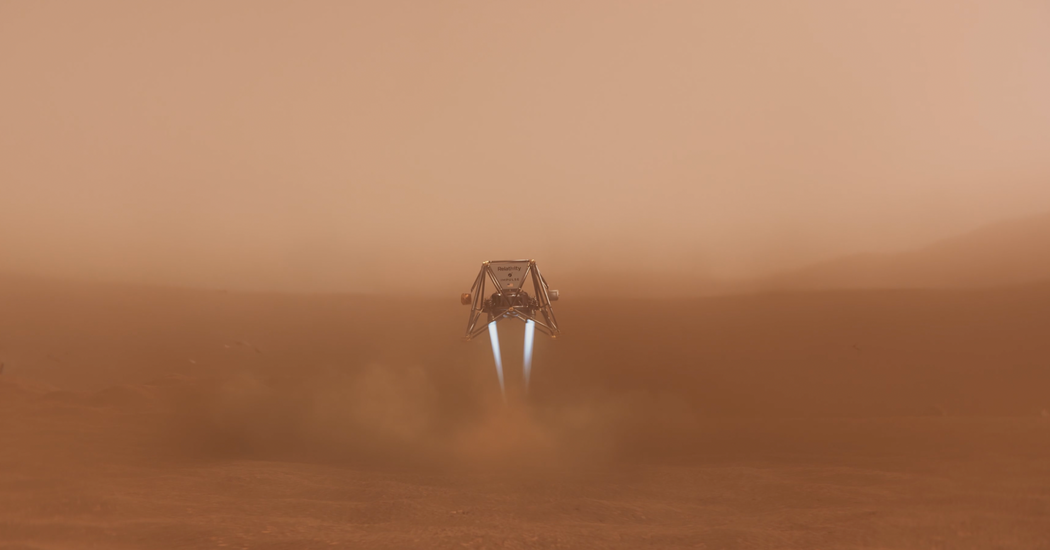
Mr. Mueller said the size and shape of the capsule would be the same as that used for the InSight mission. “It’s like using the same type of heat shield materials, exact same parachute design,” he said. “So we’re just using what NASA has already analyzed a lot and proven on every mission of this size that has gone to Mars successfully.”
The lander would be about the size of InSight but lighter, Mr. Mueller said. The basic configuration would not even include solar panels and would not operate for long, only until its batteries were exhausted.
Mr. Mueller said Impulse started talking with the NASA Jet Propulsion Laboratory in California, which manages the InSight mission, this year.
However, a spokesman for the Jet Propulsion Laboratory said there had not been much work between the laboratory and Impulse yet. “It seems we have had some preliminary discussions with Impulse about this,” Andrew Good, the spokesman, said. “But while they have been seeking to meet with us this year, that meeting has not yet occurred.”
The director of NASA’s Mars exploration program, Eric Ianson, said through a spokeswoman at the agency’s headquarters that NASA had not had any direct communications with Impulse and that it did not have insight into the specifics of what the company was looking to do.
Relativity is not the only private space company to announce planetary exploration missions.
In 2020, Rocket Lab said it was planning to send a small craft in 2023 that would fly by Venus and drop a probe to see whether there might be signs of life in the thick atmosphere. It also has a modest NASA contract to launch two small orbiters to Mars as early as 2024. But Rocket Lab already has 25 successful launches of its small Electron rocket, and last month it sent CAPSTONE, another small NASA-financed mission, toward the moon. (It is to arrive there in November).
A few years ago SpaceX also had modest Martian plans, which it later abandoned.
In 2016, the company announced that a version of its Crew Dragon astronaut capsule — without any human passengers aboard — was to travel to the surface of Mars as soon as 2018. In 2017, SpaceX canceled these plans, called Red Dragon, after it changed the capsule design to splash down in the ocean instead of using rocket engines to set down on land. (Water landings do not work on Mars, where there is no flowing water.)